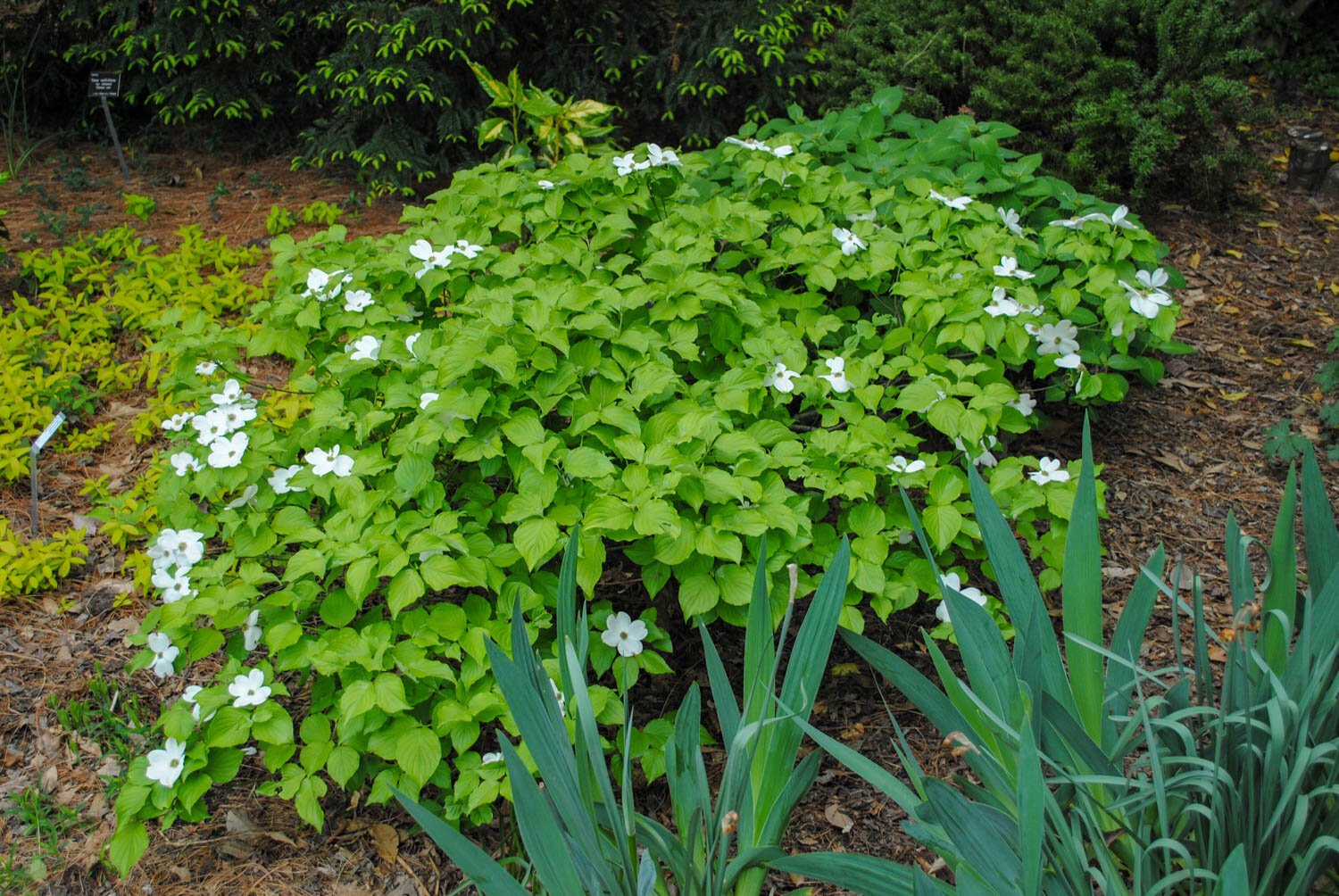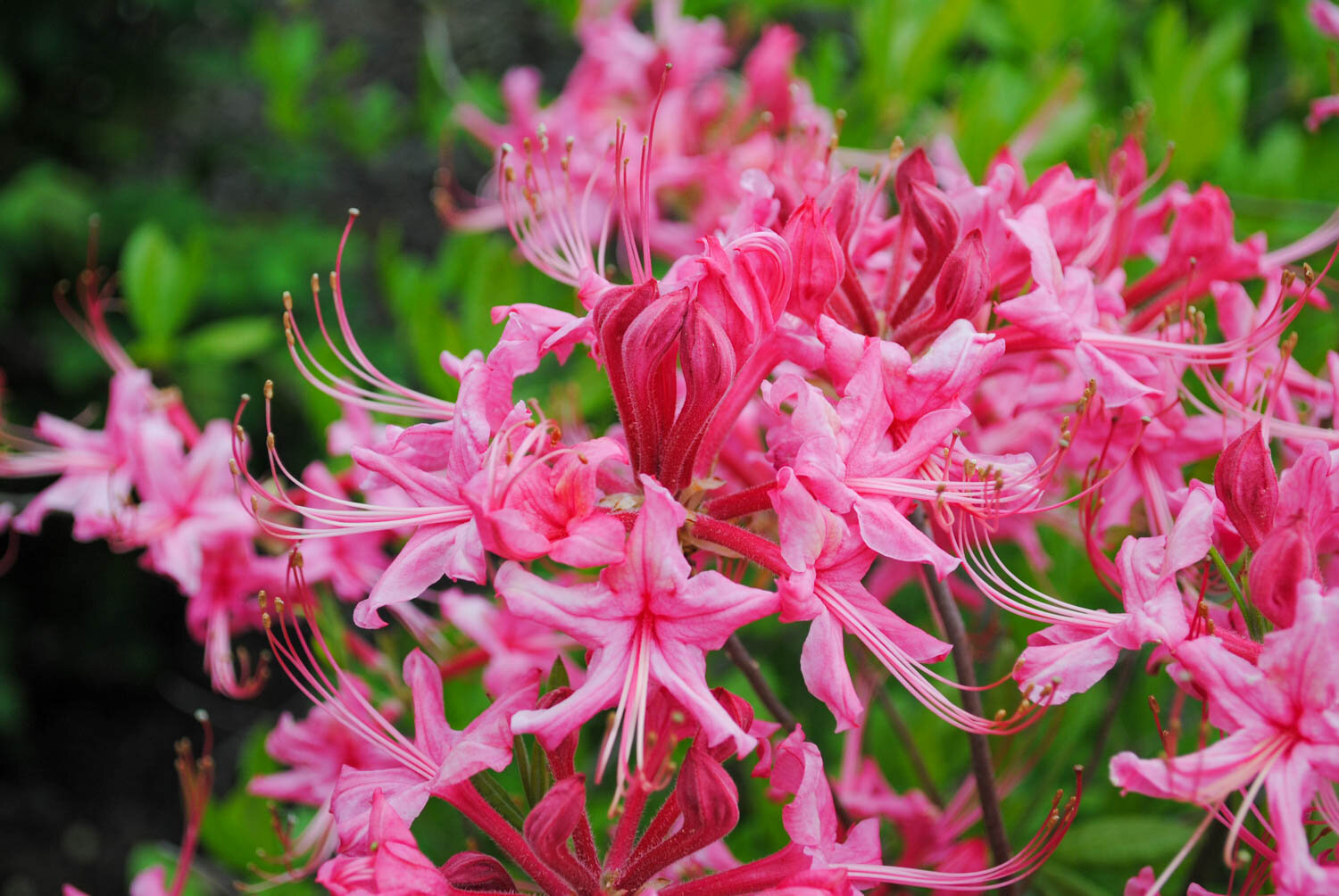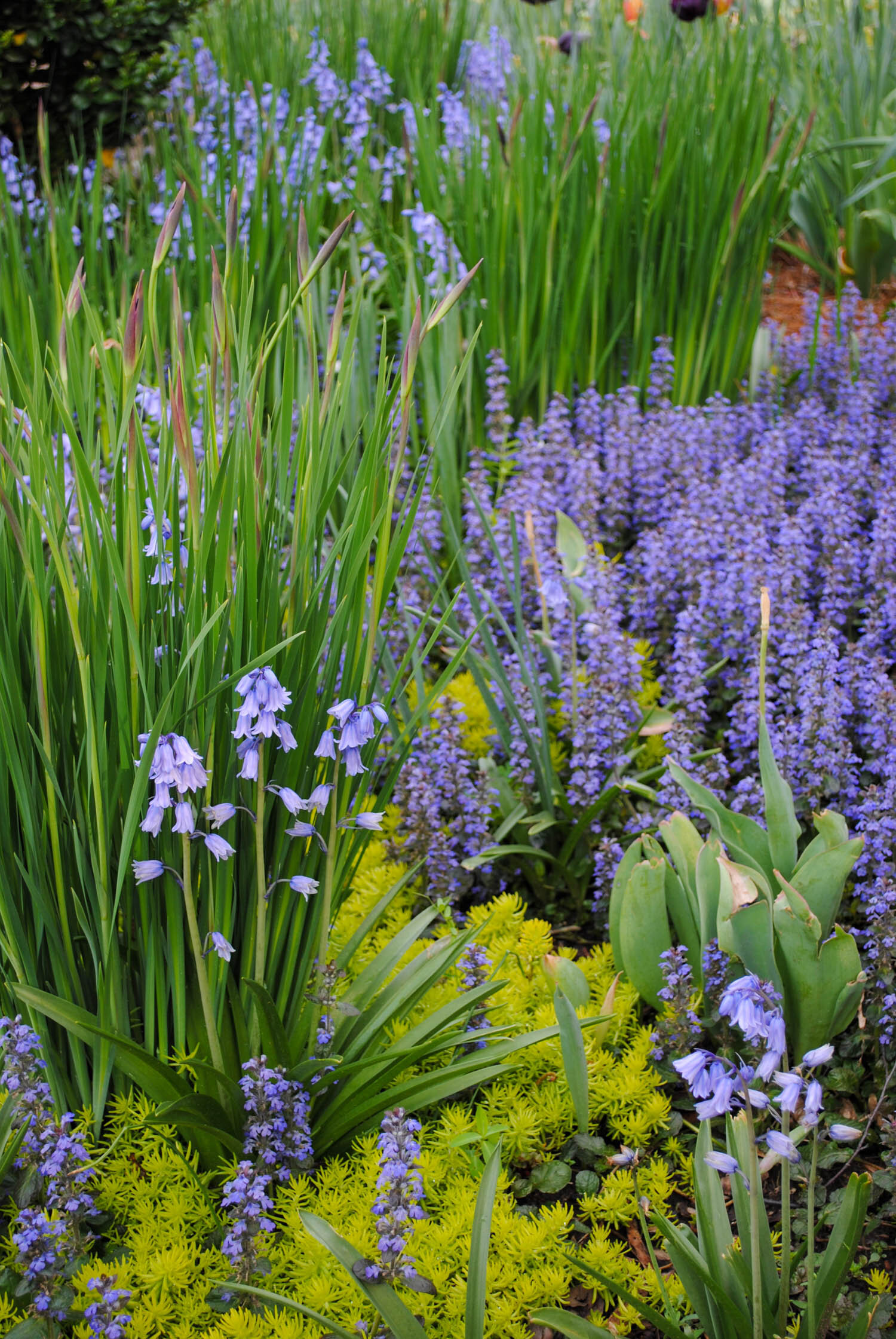This post is 4 of 12 of a series I’m doing this year reflecting back on some of my favorite plants from visiting the JC Raulston Arboretum while attending graduate school at NC State in Raleigh NC. Check back next month for more.
This week was our last week of classes on campus. The end of the semester is always hectic, but it was even more so this year with the stress of the pandemic and the impact on students.
I recall back in graduate school that towards the end of the semester when things got crazy, I found myself wanting to go to the JC Raulston Arboretum to experience the plants and nature. I would go on long walks there enjoying the flowers and plant life often as a break between projects, papers, and research. And, April is certainly a good time to explore a garden as it erupts with color. It always amazed me that even though March felt full of color, April could always beat it.
April was also the first time I ever visited the JC Raulston Arboretum when I was interviewing for my graduate school position, so this month certainly holds a special place in my heart when visiting. Enjoy these photos of some of my favorite plants from the arboretum in April. I hope they inspire you to try a few new ones in your garden.
While many cherry trees struggle in the southeast, I delighted at the size of this Prunus serrulata ‘Ukon’ and its semi-double, creamy green colored flower petals. The cultivar name means turmeric.
The parade of Magnolia continued into early April at the arboretum. Magnolia × loebneri 'Leonard Messel' is beloved by many for its color and frost tolerant flowers.
Magnolia ‘Coral Lake’ is hands down one of my top five favorite Magnolia cultivars. I just love the two-tone yellow and pink color.
Another shot of Magnolia ‘Coral Lake’. It was fun watching it become a small-statured tree during my time in Raleigh.
I can’t wait to acquire some Magnolia ‘Lois’ for planting around our log cabin. Many consider this selection one of the best yellows because it is more compact and later flowering; thus, it tends to miss the freezes.
How cool is this plant!?! I was amazed when I first encountered Cornus florida subsp. urbiniana, a form from the mountains of Mexico that has fused bracts. It was one I even remembered from my first ever visit to the arboretum.
One of my last years in graduate school I discovered this Cornus florida ‘Plena’ in a hidden corner of the arboretum. This cultivar features multiple bracts. I was amazed that after being there five years and walking all over there were still plants I hadn’t noticed yet.
Another favorite dogwood was the dwarf Cornus florida ‘Suwannee Squat’. Normally I’m looking up at dogwood flowers, but with this selection, I looked down on them.
Sinojackia xylocarpa 'La Grima' is a lovely upright selection of jack tree. Doesn’t it have such a nice vase shape?
I loved standing under Sinojackia xylocarpa 'La Grima' when it was in full flower and admiring the star-shaped flowers.
Here’s one this Tennessee native loves, Cercis canadensis ‘Tennessee Pink’! The flowers have such a rich pink color, and this redbud has good vigor.
One can’t talk about the plants at the JC Raulston Arboretum and not mention the incredible development of Calycanthus × raulstonii 'Hartlage Wine'. A cross between Calycanthus floridus and Calycanthus chinensis, this cross by Richard Hartlage has incredible vigor. The flowers are larger than either parent, and I’ve heard of some plants growing over 20 feet tall.
In the old rose garden, I always admired the southern classic Rosa banksiae 'Lutea' or Lady Banks rose. Amazingly, ours on campus this year was badly burned by the sub-zero temperatures we experienced.
Isn’t this color on Rhododendron × bakeri ‘Cylo Red’ incredible? I don’t think I’ve ever seen such an intense pink on a native azalea before.
Oakleaf hydrangeas are one of my favorite, if not my most favorite, shrubs. The JC Raulston Arboretum was one of the first places I saw the gold leaf Hydrangea quercifolia ‘Little Honey’. I would end up having one of these in my apartment patio container collection for a few years after seeing it in the arboretum.
It might not look like much, but Croton alabamensis is a durable and tough shrub for the southeast. It is rare, though, and only occurs in a few counties in Alabama and Texas.
A close up of the inconspicuous flowers of Croton alabamensis
Ungnadia speciosa is a wonderful and underused native large shrub/large tree. It is called Mexican buckeye because these purple, red-bud like flowers produce capsules that produce marble-sized seed in the fall.
A close up of the flowers of Ungnadia speciosa
Many Acer palmatum have incredible spring foliage color. Don’t you just love the red-tinged margins on the gold foliage of Acer palmatum 'Orange Dream'?
I enjoy Deutzia, even though they can look a little scraggly later in the year. Most Deutzia I had seen had white flowers, but I loved the pink highlights on Deutzia scabra 'Pink Minor'.
Exochorda ‘Blizzard’ is an improved selection bred by Tom Ranney. The flowers on this pearlbush are double the size of other Exochorda cultivars.
Growing up, we had black locust on fence rows, and their white flowers in April were always a sign that spring had arrived. I loved discovering this pink form of Robinia × margaretta 'Pink Cascade'.
If you didn’t get enough Baptisia last week, here’s a shot of Baptisia alba var. alba. Again, don’t you just love the smoky purple stems?
My mom had this exact planting combination back at our house in Tennessee, a carpet of Athyrium niponicum var. pictum under Polygonatum odoratum 'Variegatum'. It is such a great color combination that will really last all growing season for much of the country.
Pulsatilla were a new species I learned from my visits to the arboretum, and I grew to love their feathery seed heads. This is Pulsatilla cernua, a species native to Asia. I learned something fascinating researching this post. Scientists have noted that the flowers go from upright to pendulous to upright again over the week and a half that the flowers are in bloom. They noted the plants likely exhibited this behavior to protect the pollen from rain.
Don’t you love how the corona color on these Narcissus 'Golden Echo' fades into the petals? They echo the gold found in the cup. Oh, breeder, I see what you did with the name there…
Seeing the beautiful Camassia leichtlinii 'Alba' reminds me that I need to try Camassia in Texas. I do love this white selection of camas or quamash.
I’m a sucker for the clusiana tulips. They look like cute lollypops you could just eat up. Here’s the peachy-colored Tulipa clusiana var. chrysantha.
And, here’s the lovely Tulipa clusiana 'Cynthia'.
And, the faded peppermint colors of Tulipa clusiana 'Lady Jane'. I’ve GOT to order some clusiana tulips for planting this fall!
I’m always enchanted by the yellow bells of the native Uvularia grandiflora.
I saved one of my favorites for last. Watching Scilla peruviana flowers unfurl was always a true spectacle to enjoy in the garden. It was like watching a firework explode over days.
And, of course, April at the JC Raulston Arboretum brings to mind their galas from years past. Will Hooker and his permaculture class built this incredible dragon one year out of bamboo to tie into the Asian theme.





































































































